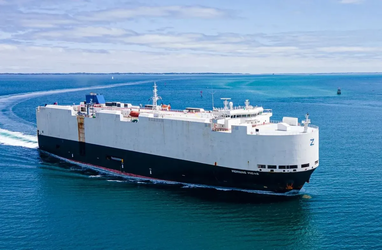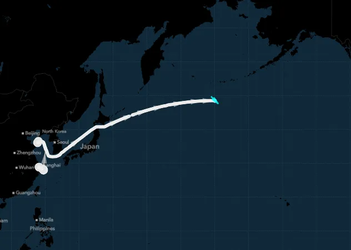
Car-carrying ship Morning Midas in 2020.
Photographer: Sam Croft/MarineTraffic
A ship carrying about 3,000 cars to Mexico was abandoned in the middle of the Pacific Ocean after catching fire Tuesday.
Smoke was first seen coming from a deck on the Morning Midas that was carrying electric vehicles, the ship’s manager Zodiac Maritime said in a statement. It has about 800 EVs on board.
The crew initiated firefighting procedures but the blaze could not be brought under control, it added.
The US Coast Guard evacuated all 22 crew members, transferring them to a nearby merchant ship. The Coast Guard said earlier it was sending aircrews and a vessel toward the ship where crew had been actively fighting a blaze.
Zodiac confirmed that responders are being deployed to support salvage and firefighting operations. The ship departed the Chinese port of Yantai on May 26.

Morning Midas in the middle of the Pacific Ocean.
Source: Bloomberg
Car-carrying ships haul thousands of vehicles at a time across the world’s oceans.
In recent years, there have been a handful of significant blazes involving vessels hauling electric vehicles, prompting concerns that the batteries inside those cars can catch light and lead to significant disasters.
Such incidents can have major ramifications for the companies that make the cars and shipowners alike, as well as for their insurers.
In 2022, a vessel carrying about 4,000 vehicles caught fire in the Atlantic and ended up sinking despite efforts to tow it to safety.
Shipowners have also taken steps to try and manage the safety risks involved in hauling electric vehicles.
Last year, a key safety group published guidelines on how to deal with fires on board the vessels.
Article Link
Archive


